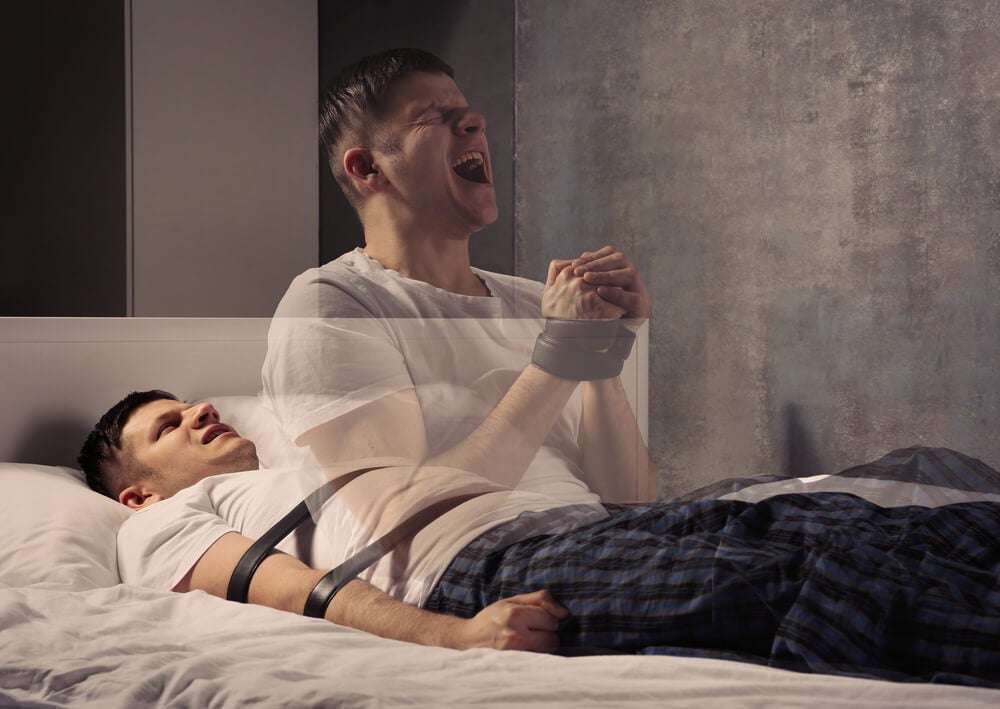Hypnagic hallucinations are vivid perceptual experiences that occur early in sleep and consist of vivid dreams associated with visual, tactile, and auditory phenomena, while hypnoopomic hallucinations, on the other hand, are similar experiences that occur when awakening.
The term bomb (act of sending) in reference to hypnopomic hallucinations was first used in 1918 by Myer to describe these phenomena during the transition from sleep to awakening.
- The first description of hypnagogic hallucinations was made by the French psychiatrist Baillarger in 1846.
- Who called them psychosensory hallucinations.
- The term hypno- (sleep) and? Agogues (induced) was introduced by Maury in 1848 to refer to hallucinations or illusions that announce sleep.
Thus, these hallucinations occur when the individual thinks he is awake. The person can see, hear and feel, but cannot move, so hypnagic hallucinations are closely related to sleep paralysis.
The incidence of these hypnagic and hypnonomic hallucinations in the general population occurred in 25 to 30% of people with narcolepsy (2). In 1957, authors Yoss and Daly included these hallucinations in the diagnostic criteria for narcolepsy. These hallucinations have also been observed in excessive daytime sleepiness disorders; have often been observed in patients with sleep paralysis before falling asleep. (3, 4)
In addition, certain psychoactive substances, such as khat (5) and hashish (6), have been linked to the induction of hypnagic and hypnonomic hallucinations.
Sleep paralysis is a generalized and transient inability to move or talk that occurs primarily during the sleep-wake transition. In this, hypnagic hallucinations occur.
Sleep paralysis and hypnagic hallucinations were important features of the nightmare, it is popular culture that has adorned these symptoms with supernatural interpretations, so it was thought that sleep paralysis and hallucinations could be caused by the visit of demons and spirits.
In 1834, author Mcnish defined the nightmare for the first time
“Can’t the imagination conceive of the horrors that [the nightmare] often generates?Anything horrible, disgusting or terrifying in the physical or moral world appears in a terrifying matrix;?In an instant, you can be aware of an evil demon on your side; then, not to see such an appalling object, he will close his eyes, but nevertheless, the terrifying being shows his presence; because his icy breath can be felt scattered on his face, and he knows he’s face to face with a Then, if you look up, you see horrible eyes staring at you and an aspect of hell that smiles at you with even more hellish malice. Or can you even get the idea of a monstrous witch lurking in your chest, motionless and wrong?
The quote above is a description of a nightmare written more than a century ago. As we read this and other similar narratives, it is clear that the term has undergone a change of meaning over the past 150 years or so. It is used to refer to very vivid dreams, of unpleasant content, which produce in the individual an important feeling of fear, even awakening it several times.
In his book On the Nightmare, Jones explains that the word nightmare originally meant “Fanatic of the Night” or “night incubator”. These nocturnal demons have become responsible for terrifying dream experiences.
An incubus is a demon that, according to the popular European mythology of the Middle Ages, stood above sleeping women, legend has it that the devil’s intention was to have sex with the women he trusted, his goal could sometimes be: to have children with the raped woman, as the legend of Merlin (8) tells. Its female counterpart, which lands in sleeping men, is called succubus.
The incubuses visited people at night and sat or lay on their chests paralyzing them. Jones argues that this belief was almost universal in all ages and cultures, so it seems that the hypnagic hallucinations we are talking about are seen, on a path, as the cradle of the rise of night demons.
These types of hallucinations, in addition to sleep paralysis, are currently being investigated as a symptom of narcolepsy; however, it seems that these phenomena can also occur in healthy individuals (9).

